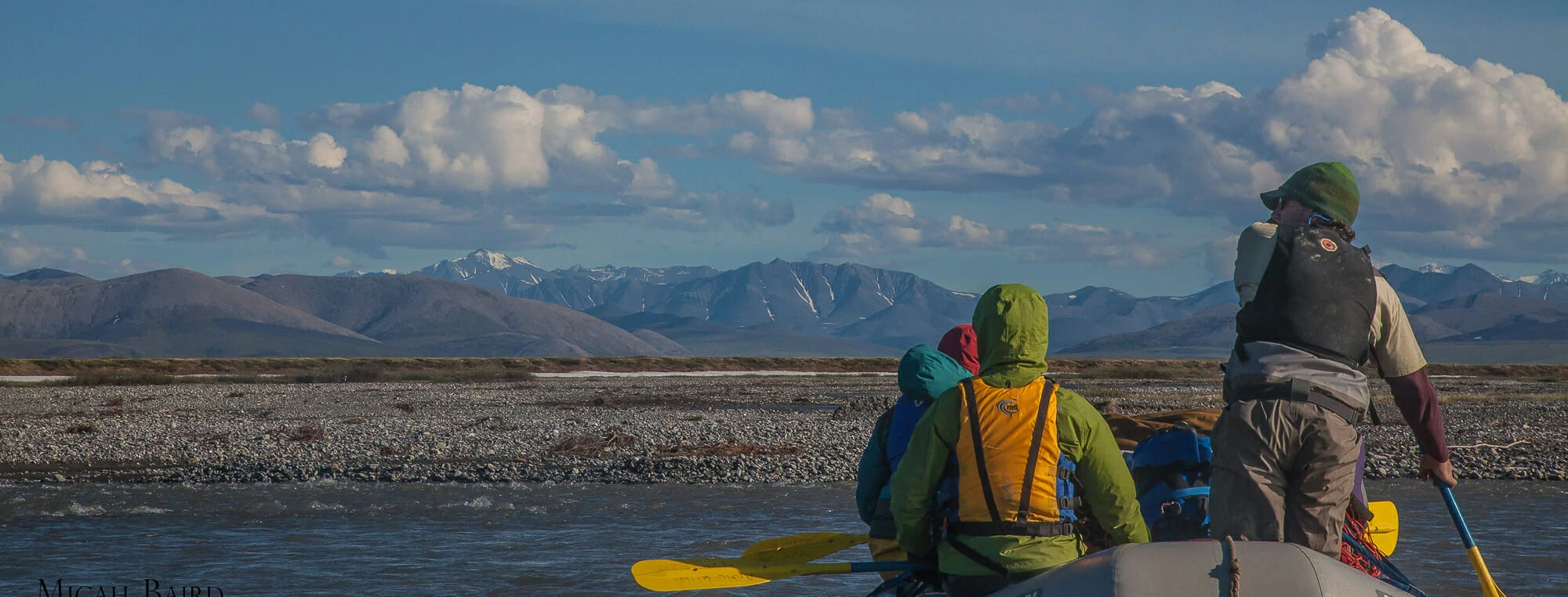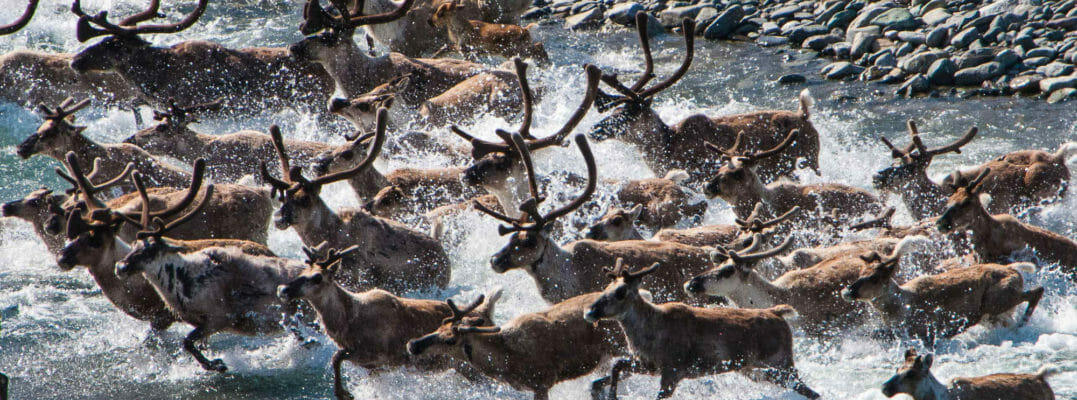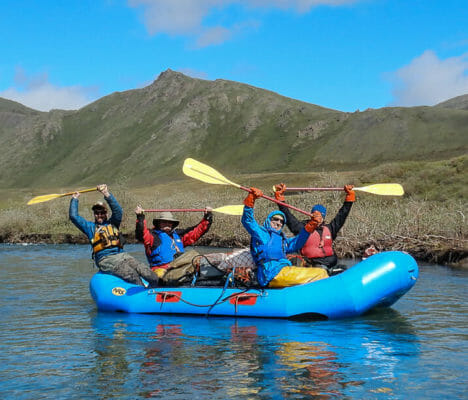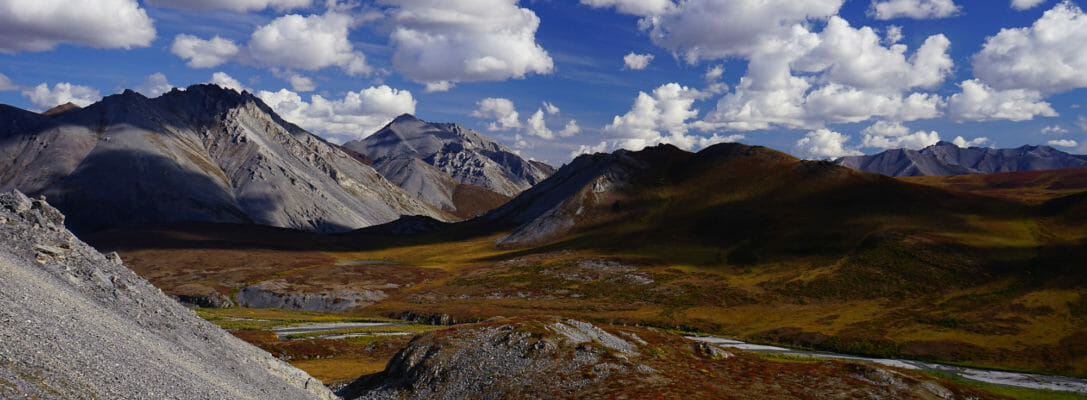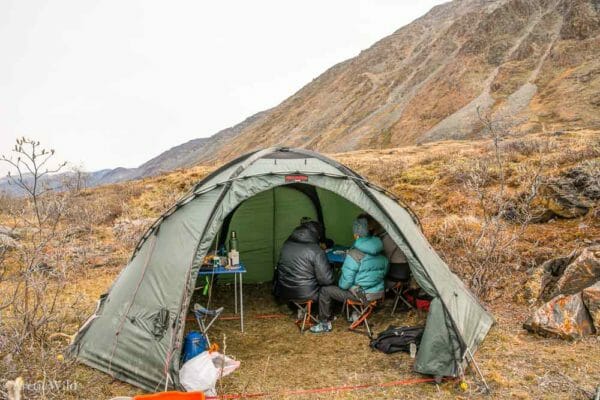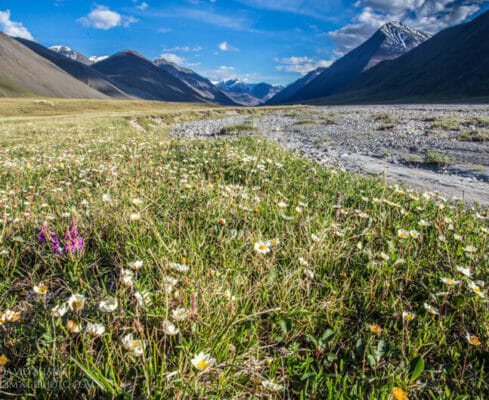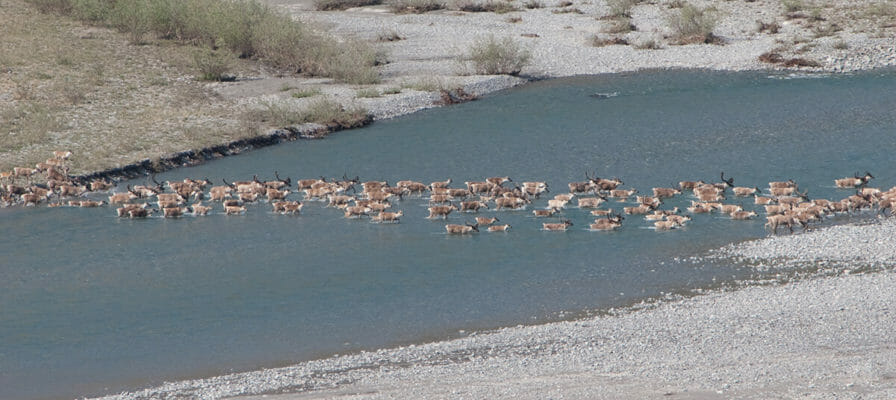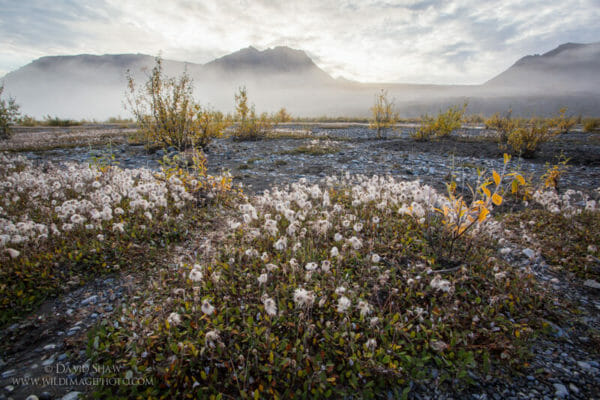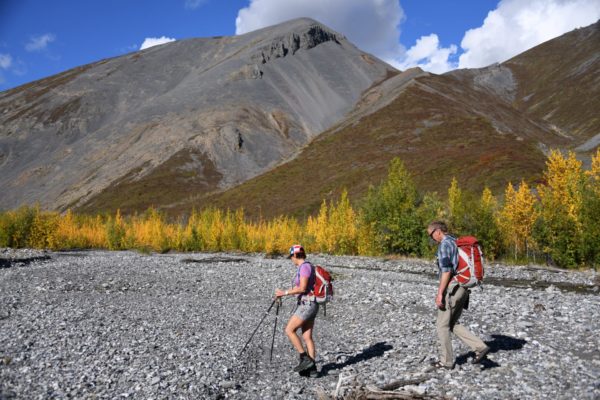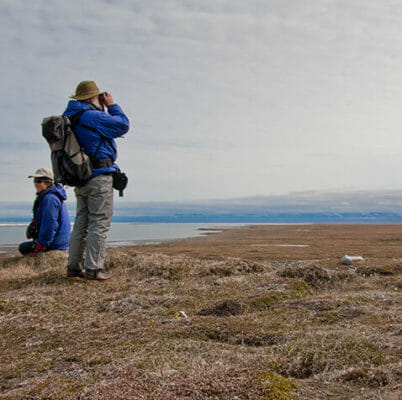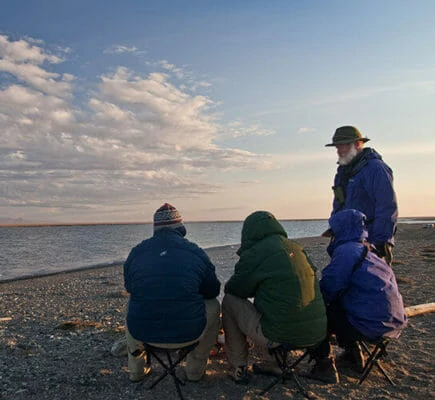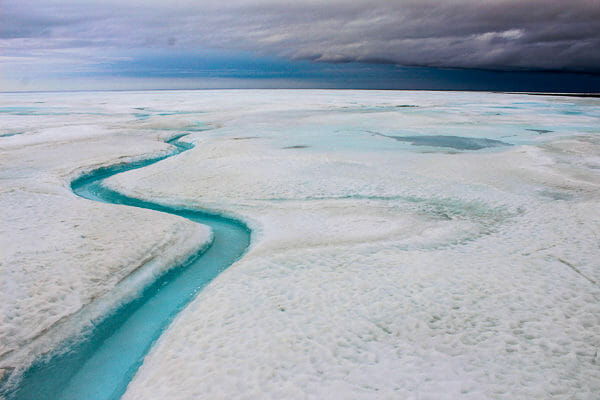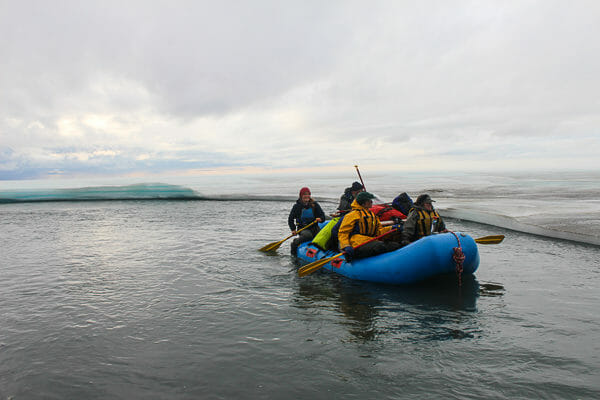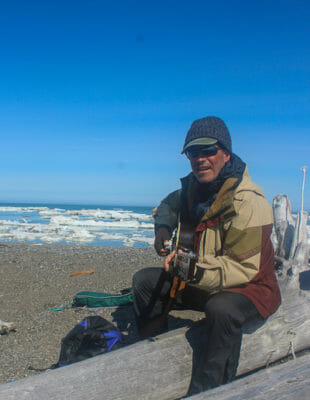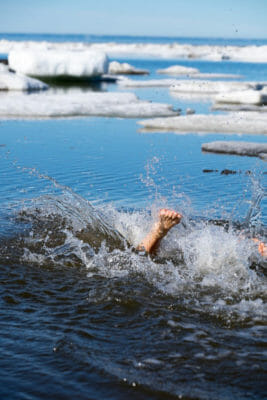Last updated: July 9, 2025
Itinerary
What follows is a general flow of events. Expect the unexpected and prepare to be flexible.
June 10 or (June 22) depending on which trip
Meet with your guide at 4 pm for a pre-trip meeting in Fairbanks at Arctic Wild headquarters.
June 11 (23)
Fly north from Fairbanks across the mighty Yukon River and over the Arctic Circle. Land in the Gwich’in community of Arctic Village, and then onward deep into the Brooks Range landing on an impossibly small gravel bar next to the Kongakut. Once the plane goes, we are on our own in the immense and quiet landscape.
June 12 - 13 (24 - 25)
Our trip starts just 10 miles from the Continental Divide where the Kongakut bubbles from deep springs in limestone gravel, ancient and clear water, moving steadily to the Arctic Ocean. Above the gravels is the green and brown of spring tundra and above that the darker bedrock, layer upon layer stair-stepping to five and six thousand foot peaks last winter’s snow still deep in the gullies.
We will spend alternate days paddling the clear water and hiking the rocky ridges, camping in limestone grottos and always searching for wildlife.
June 14 - 16 (26 - 29)
The river was small where we began, almost small enough to wade across in the shallows but now it gains force, bigger and bigger as water is carried into it by a dozen tributary valleys. The grey cliffs and emerging leaves are brilliant in the spring sun and the willows are full of bird song.
About mid-way down the river small canyons and meandering braids gain focus and force as the Kongakut moves through harder layers of rock and enters a deep canyon with grand boulders on the banks and mid-river. We will carefully negotiate the “busy” boulder strewn canyon rapid and then back paddle hard as the Kongakut pushes into sheer cliffs rising hundreds of feet from the water. The boating is exciting and fun. The scenery is truly spectacular!
Below the canyon is a favorite campsite with several great hikes into the high country and a fishing hole which often feeds us handsomely.
On rafting days we’ll spend about 5 hours traveling with frequent stops to watch animals, inspect a curious site, or if cold, just to warm-up.
We’ll also take a nice long lunch stop and often we take a short stroll after lunch to explore. Or if we explored under the mid-night sun the previous day, we may enjoy a nap on the soft tundra in the mid-day sun.
June 17 - 19 (June 30 - July 2)
As we travel, we see the many faces and moods of the Kongakut. Sometimes we pass through great fields of aufeis (ice that builds up as the river freezes layer upon layer during the winter). In the spring the river carves through the aufeis and we float past frozen blue walls of ice five to ten feet high.
When we have traveled far enough we scout for the next camp with a view and settle into our new home for a night or two.
With the canyon behind us, the mountains are smaller but no less impressive. Spring will be advancing and the northern edge of the mountains tend to be warmer than the peaks bringing us into a region of incredible wildflowers at the peak of their bloom. The valley bottom may be covered in yellow and white while the hillsides are flecked with purples, blues and the pale yellow of Arctic Poppies. A staggering abundance of flowers!
From each camp we can explore our surroundings – peaceful cottonwood glades, small waterfalls, flowery willow forests, and jutting outcrops above the river make for great hiking destinations.
At the very northern edge of the Brooks Range, will hope to hike to a sweeping view of the Arctic Coast and the pack ice of the Arctic Ocean stretching off to the curved horizon.
The coast beckons. Most people who paddle the Kongakut end their trip at the end of the mountains and miss the most interesting part of the river!
June 20 - 21 (July 3 - 4)
As we round the last ridge and the sky swallows our small boats in a great maw of blue and grey, gulls cry-out announcing our presence on the coastal plain of the Arctic Refuge, a landscape like no other.
Without the mountains to hem it in, the Kongakut sprawls across the tundra, ranging widely in divergent channels. The braids of river collide in whirlpools and carve deep into great overhanging permafrost bluffs which smell of ancient peat and periodically dollop Pleistocene muck into the river.
The flat horizon and endless daylight are disorienting in a wonderful and serene way. Without scale we confuse ground squirrels for grizzly and find ourselves returning from an evening stroll at 3 am.
Time permitting, we’ll take a layover on the Coastal Plain to walk the tundra expanses colored in cream by Dryas flowers. We often see Tundra Swans on nests in the shimmering distance and caribou gathered on aufeis.
June 22 (July 5)
After 2 weeks of paddling, hiking, laughing, and exploring the Refuge, the Kongakut spills us into the Arctic Ocean. Beyond the lagoon we find a barrier island littered with driftwood from forests hundreds of miles to the south!
Eider nests and polar bear tracks litter the beach and there is usually some remnant sea-ice bobbing in the ocean.
June 23 (July 6)
After so many experiences and adventures we await the arrival of our bush pilot, who will weather permitting land on the beach. Once loaded, we will fly south across the breadth of the Arctic National Wildlife Refuge, retracing our route up the Kongakut. If all goes according to plan, we arrive back in Fairbanks by dinner time.




